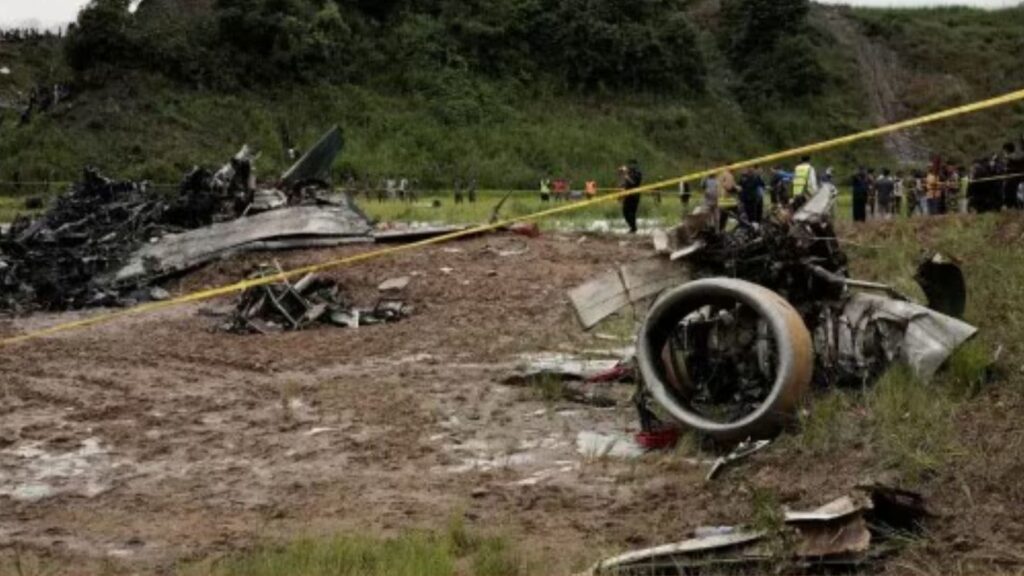970x125
Last year’s fatal crash of a Saurya Airlines jet was caused by wrong take‑off speed figures in the aircraft’s documentation, says a government panel in Nepal as reported by Reuters on Friday.
970x125
The CRJ‑200LR took off from Kathmandu in July 2024 and crashed moments later. The only survivor was the captain, Manish Raj Shakya. The CRJ-200LR aircraft, operated by Saurya Airlines, had 19 people on board and crashed moments after leaving Kathmandu’s Tribhuvan International Airport.
What the investigation found
A government-appointed investigation panel found that the aircraft suffered a “deep stall during take-off because of abnormally rapid pitch rate commanded at a lower-than-optimal rotation speed.” In simple terms, the aircraft’s nose lifted too quickly, at a speed too low for safe take-off, which caused it to lose lift and fall from the sky.
At the heart of the issue was a “speed card” a document that gives pilots the correct speeds for take-off, climb, and landing. Investigators said the card contained incorrect information and that past warning signs, such as previous take-offs with high pitch rates, had not been properly addressed.
Aviation expert Nagendra Prasad Ghimire told Reuters the plane made a “premature take-off before gaining the necessary speed.”
What is a stall — and how it may have played a role
The report suggests that the plane entered an aerodynamic stall — when a plane stops flying because its wings lose lift. A common cause of a stall is a high angle of attack, which happens when the plane’s nose points too far upward without enough speed to keep the aircraft in the air.
In this case, some analysts believe the aircraft may have experienced a wing stall, a type of stall where one wing loses lift before the other. This can cause the plane to roll sharply to one side — which is what early video footage shows: the jet banking steeply to the right before crashing.
Story continues below this ad
According to flight training manuals, a stall close to the ground leaves pilots with very little time or altitude to recover.
The aircraft’s steep climb at low speed meant that the wings could not generate enough lift. The crew did not have enough altitude to push the nose down and recover. In the final seconds, the plane’s wings were seen levelling briefly before impact, suggesting a last attempt to regain control.
The investigation also found what it called “gross negligence and non-compliance” in how the airline handled cargo and baggage. It recommended all airlines review their speed cards and ensure proper loading procedures are followed.
The panel urged Nepal’s Civil Aviation Authority (CAAN) to tighten oversight of non-scheduled flights. CAAN said it had not yet reviewed the report and could not comment.
Story continues below this ad
CAAN spokesperson Babu Ram Paudel told Reuters he could not comment because he had not seen the report. Saurya Airlines operations manager Bivechan Khanal said the carrier would “do everything necessary” to carry out the recommendations, according to Reuters.
Nepal’s air safety under scrutiny again
The crash once again draws attention to Nepal’s troubled aviation safety record. The mountainous country relies heavily on air travel, but its airlines have long faced concerns over training, maintenance, and oversight. Since 2013, Nepali carriers have been banned from flying into European Union airspace due to safety concerns.
970x125

